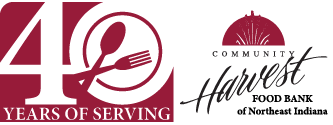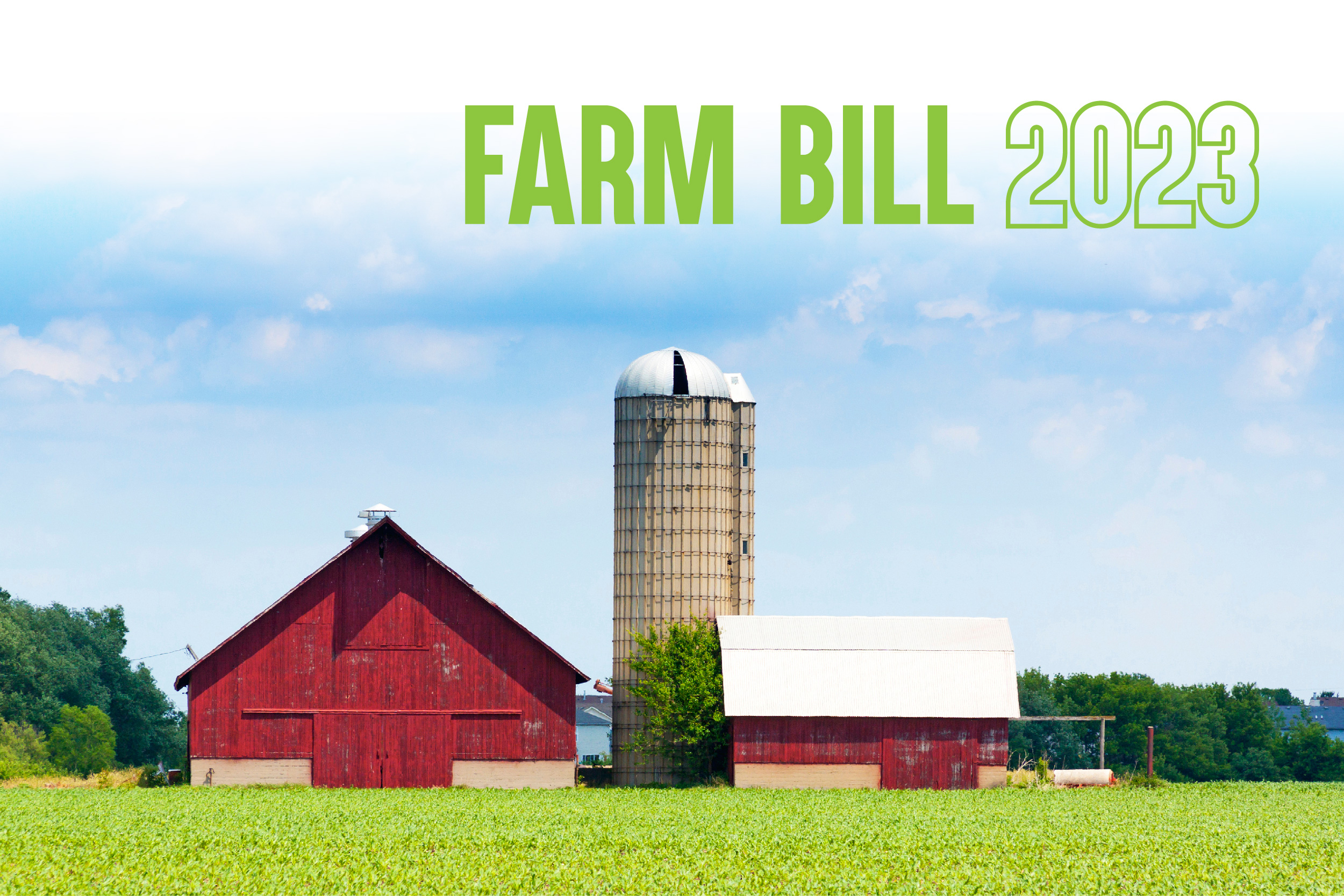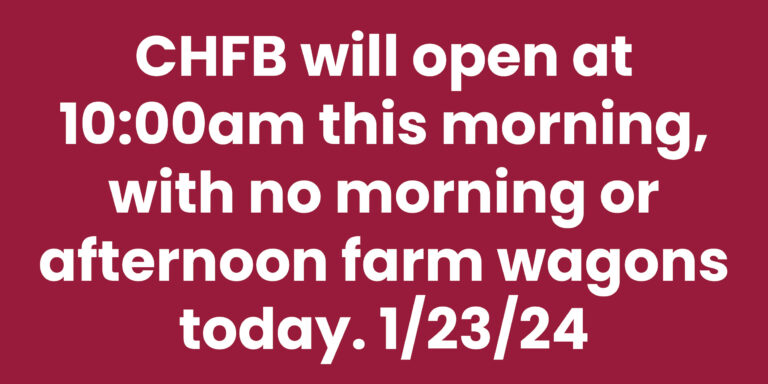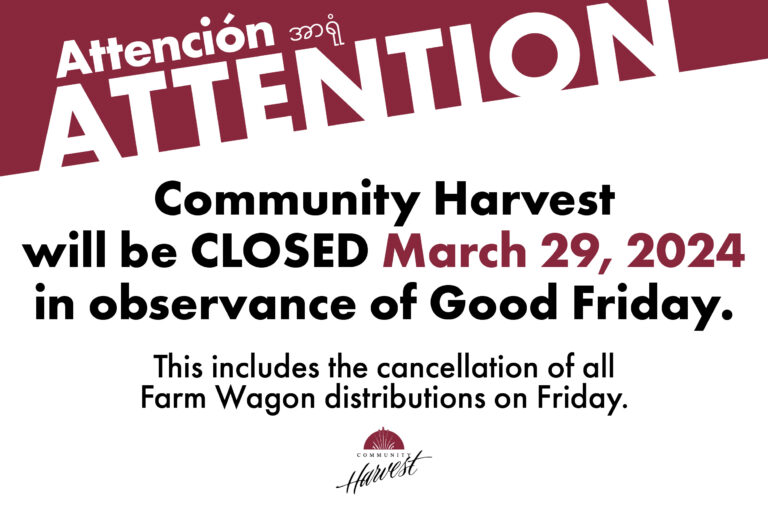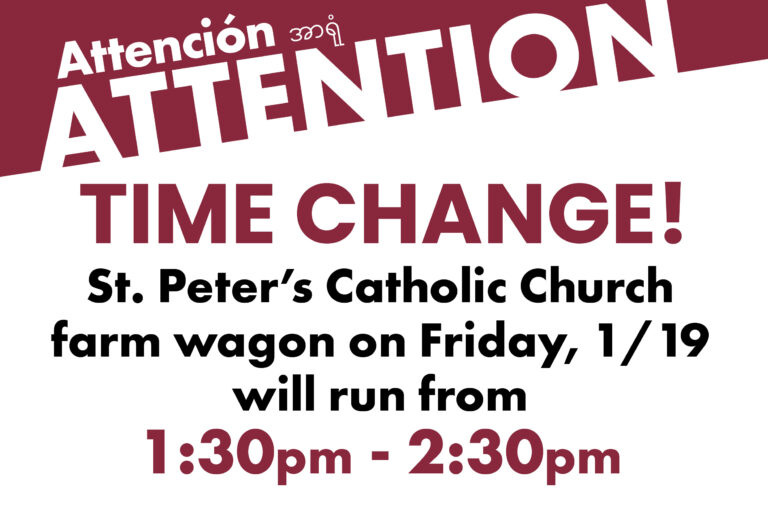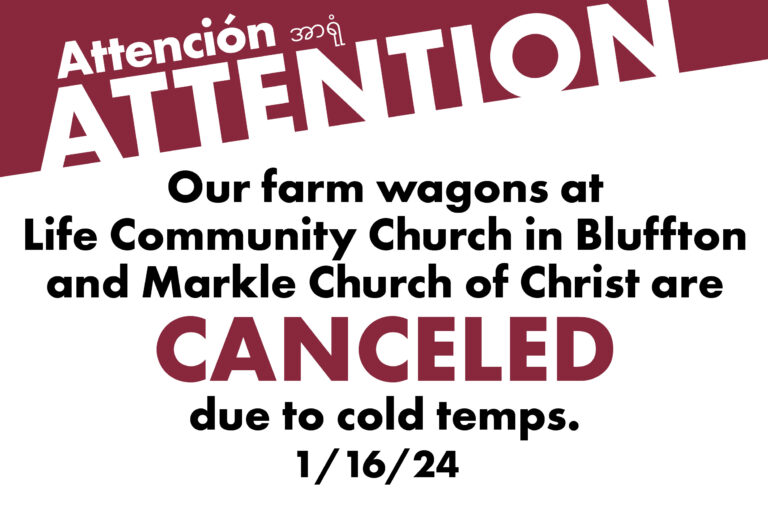A Note from Carmen Regarding the Farm Bill
Our Neighbors Facing Hunger Need Decision-Makers to Urgently Move Forward on Government Funding and Consideration of the Farm Bill
We have a distribution at our Tillman Rd Location on Saturday mornings. Before COVID we served about 700 families each Saturday with the help of about 20 volunteers. During COVID, the need for our services skyrocketed, as it did for most service providers, and we went from 700 to over 1,000 families seemingly overnight. Our highest point during the national state of emergency and the height of a pandemic that put thousands out of work was just over 1,300 families served in 2 hours. Last week, the pandemic in the rear-view, no emergency funding or support to be found, no state of emergency on our airwaves, we served over 1,400 families. The awareness to the dire need for hunger relief may have stopped being popular, it may have quieted down on the television and the radio, and social messaging and giving trends may have moved on, but at our doorstep, in the eyes and words of the families we see and serve every day, the call for action has never been louder or clearer.
A woman came through one of our 15 drive through distributions recently in a SUV in seemingly good condition. As we loaded food into her car, she asked to not receive a couple of the items we had that day. Seeing that this is not a request we get often, she proceeded to let us know that she was living out of her car and didn’t have the means to use some of the products we were giving out. She had no way to cook or prep anything and could only use ready-to-eat items. This is a small glimpse into the lives of the thousands of food-insured people in our area that, as of a year or even months ago, were able to afford rent, car payments, and basic needs. Over a small span of time, payments increased, life became more expensive, and wages from full-time jobs simply failed to keep up, leaving people with nothing. We have families having to choose between keeping their car or their house, and sometimes between those things and being able to eat. These are people with jobs, families, support networks, and resources who have simply been outpaced by the cost of living. Hunger doesn’t have a face, it has millions of them, and they look exactly like yours, mine, and the people you love and care about most in this world.
Food banks are facing a food crisis. A majority of the more than 200 food banks in the Feeding America network serving every county in the country, which Community Harvest Food Bank is part of, report steady or increased demand for food since June 2021. This food crisis looms at the confluence of decreasing donations and continued rising food prices that strain the Feeding America network’s ability to serve families across the U.S. The stark reality is Community Harvest Food Bank may not have the resources to serve all the people in the 9 counties in northeast Indiana (LaGrange, Steuben, Noble, DeKalb, Whitley, Allen, Huntington, Wells and Adams) who seek our help.
There’s no time to waste: Across the country, the number of people facing food insecurity is growing. In 2022, more than 44 million people, including 13 million children, in the U.S. lived in food-insecure households—an increase of nearly 31% and 44% respectively from the previous year.
Congress’ consideration of the farm bill represents a significant opportunity to substantively help food banks nationwide. The farm bill is our country’s most meaningful food and agriculture bill and is reauthorized by Congress every five years. The farm bill impacts nearly every federal nutrition program that helps ease the strain and stress of hunger in communities across the country. This includes The Emergency Food Assistance Program (TEFAP)—which, through the help of food banks, ensures that food from U.S. farms and producers makes its way to the homes of families facing hunger—and the Supplemental Nutrition Assistance Program (SNAP)—which helps families afford groceries. The farm bill impacts if and how millions of people in our country put food on the table.
Feeding America data shows that 1 in 3 people facing hunger are unlikely to qualify for SNAP. Many of these working families turn to food banks to help fill the gap. Food banks need programs like TEFAP to help ensure these families can put healthy and nutritious food on the table. Among people who do receive SNAP benefits, two-thirds are children, seniors and people with disabilities. These federal nutrition programs, combined with other public and private partnerships in the community, like food banks, create a critical food support system for our neighbors facing hunger.
Unfortunately, the recent stalling of negotiations on federal government funding forced the delay in Congress’ consideration of other significant legislation, like the farm bill, which expired in September. If lawmakers do not consider the farm bill soon, many federal agriculture and nutrition programs are at risk of being underfunded. This would put additional strain on farmers, food banks like ours, and our neighbors facing hunger.
Even more alarmingly, if decision-makers in Washington cannot agree soon, government funding could lapse, leading to a government shutdown. As a result, federal employees, active-duty military members and people who work for a federal contractor could temporarily find themselves without a paycheck. Food banks will be the first, and potentially only, option for assistance for many of these people—further exacerbating the food crisis.
U.S. Congressman Jim Banks and U.S. Senators Mike Braun and Todd Young must take urgent action to ensure that the government is funded, and a bipartisan farm bill is considered—keeping federal nutrition programs strong during both deliberations. Our neighbors facing hunger, and food banks like Community Harvest Food Bank who proudly serve them, are counting on lawmakers to act.
For more information on the farm bill: https://www.ers.usda.gov/topics/farm-bill/2023-farm-bill/
